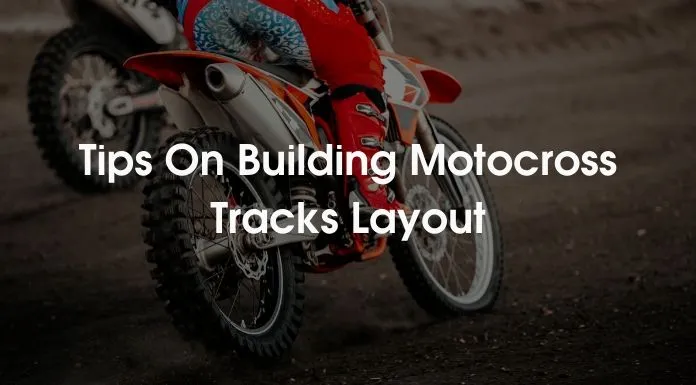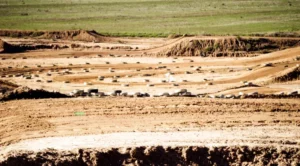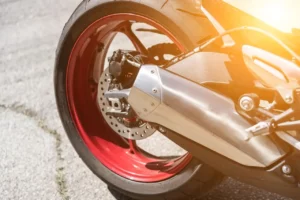What would be more amazing than riding a dirt bike or competing in motocross? Riding your own dirt bike on your own made motocross track!
Making your own motocross track may sound terrifying, but it is workable! This article of mine will give you adequate info to make you start doing.
I’ll tell you how to build your own motocross track into phases.
Let’s start by discussing about location and planning. When you’re designing a track, it’s obvious that a bigger space is always going to be better.
But if you’re lucky enough to have big piece of land or even you own a back yard that’s big enough to ride your dirt bike in, then building your motocross track is possible.
You may get surprised at what you can do with just a single acre of land, especially if you’re building the track for you to ride your bike on. When picking land for own dirt bike riding, you may need keep two important things in your mind.
The area available to you and who else in a neighborhood. Neighbors and locals can cause problems for motocross track owners. This is just because of the noise complaints (especially if you’re riding 4-strokes).
With keeping this in mind, you need to give careful thought to your planned track location.
Because I think you don’t want to spend hundreds of hours building a motocross track, just for shut down in the first week of riding.
That would be heartbreaking I guess.
So much effort of yours will go into waste. Make sure you check out the laws and local regulations as well. I believe making a personal motocross track in a rural area would be much better. Now let’s go over a few things to keep in mind when building a motocross track.
Equipment
If you have flat field and a shovel, you’re not having a high jumps. No one wants waste that much time shoveling. If that is the case. Don’t forget to take advantage of every bump and dip you find.
Larger tracks will mostly certainly need a bulldozer, you can cut out the shape of the track in a single pass and use the cut off dirt for jumps and berms. A smaller skid steer will also do a better job, and you can use these to cut down around the edges for drainage.
An excavator will also come in very handy. You can use a small excavator for building and shaping jumps and berms. And you’ll need one for digging and drainage ditches and culvert channels.
A farm tractor with a front-end loader, a skid steer, even a quad with a snow clearing blade (just use it to lightly scrape the surface and push the results into a pile). If you have full-fledged excavating equipment, more power to you!
Material
You’ll probably have to bring in dirt at some point. You may use clay based dirt, the more clay it is, better it would be. This helps to prevent rutting on jumps, which means less maintenance for you.
The clay itself is fairly cheap, but getting somebody to bring it to you can cost a lot.
If you have a big enough piece of property, with the right soil conditions, you can just excavate all your dirt from one corner, or remove it from the side of a hill.
Otherwise you need to get a little creative.
1. See if there’s any clean fill nearby
Sometimes you get lucky and someone needs a place to dump dirt. Check with people digging basements, or contractors digging lots of basements, highway crews, and so on.
2. Build a pond
Pick a spot off to the side or in the middle of your track and excavate a hole with sloped sides. Use the excavated dirt to build your obstacles and the hole as a retention pond. The pond can also help you keep the track drained and dry, and provide a source of water for wetting and packing the track later.
Bear in mind that once you start digging the hole, you’ll need to finish the excavating before the next big rain, or have access to pumps to keep everything dry until you’re done.
3. Stack and bury
Find what you can to take the place of dirt. I’ve seen a lot of tracks that have rocks, logs, culverts and even scrapped vehicles under every jump. Just place the items where you want the jump and cover with a layer of dirt.
In this case, pay attention to the side of the jumps to make sure there’s no sharp object or hard debris poking through.
It’s bad enough if you crash your dirt bike on a jump…worse if you smack yourself up on some jagged scrap metal or exposed concrete.
A variation of this technique is to dig a hole, fill it with your logs, or scrapped cars, and then use the excavated dirt on top. If the track is being built in a treed area, logs work really well.
Cut them in a six to eight feet lengths and lay them perpendicularly to the track. Then stack them to get the rough height and shape you want.
When you cover them with soil, they’ll eventually rot and compost, turning to dirt as well as a (an eco-friendly dirt bike track) .
4. Building Jumps
Jumps and whoops can really eat up all of your dirt, if you have any large boulders or logs, you can use these to fill the jump and save on dirt, they’ll also give the dirt something to cling too.
Make the jumps nice and long, so they don’t throw you around, or buck you off as you leave the lip. And try to make them around 3:1 (3lenghth: 1height); meaning if the jump is 5ft high, it needs to be 15ft long.
With this ratio the jump will carry you as a good distance, and you’ll also get some good height.
Another good tip is to make the jumps as wide as possible. This means there will be more lines that riders can take, so they won’t be tearing up the same part of the jump during every pass.
With all of this in mind you should now have a good idea of where to start with your track, and how to get the project off to a start.
Design and planning are the most important things to get right, take your time and you’re really proud of.
One more thing to keep in mind: if you’re still progressing in the sport, don’t be afraid to build smaller jumps, or even a smaller track. You can always go back in a few months and make everything bigger as you gain more experience!
Conclusion
Many people are far away from a track. Even they are fond of dirt bike riding they cannot ride the dirt bike off road too often. Having a track is very important for riding.
We have expalined how to build a dirt bike riding track layout. hope you love this.
Thank you for reading this!






